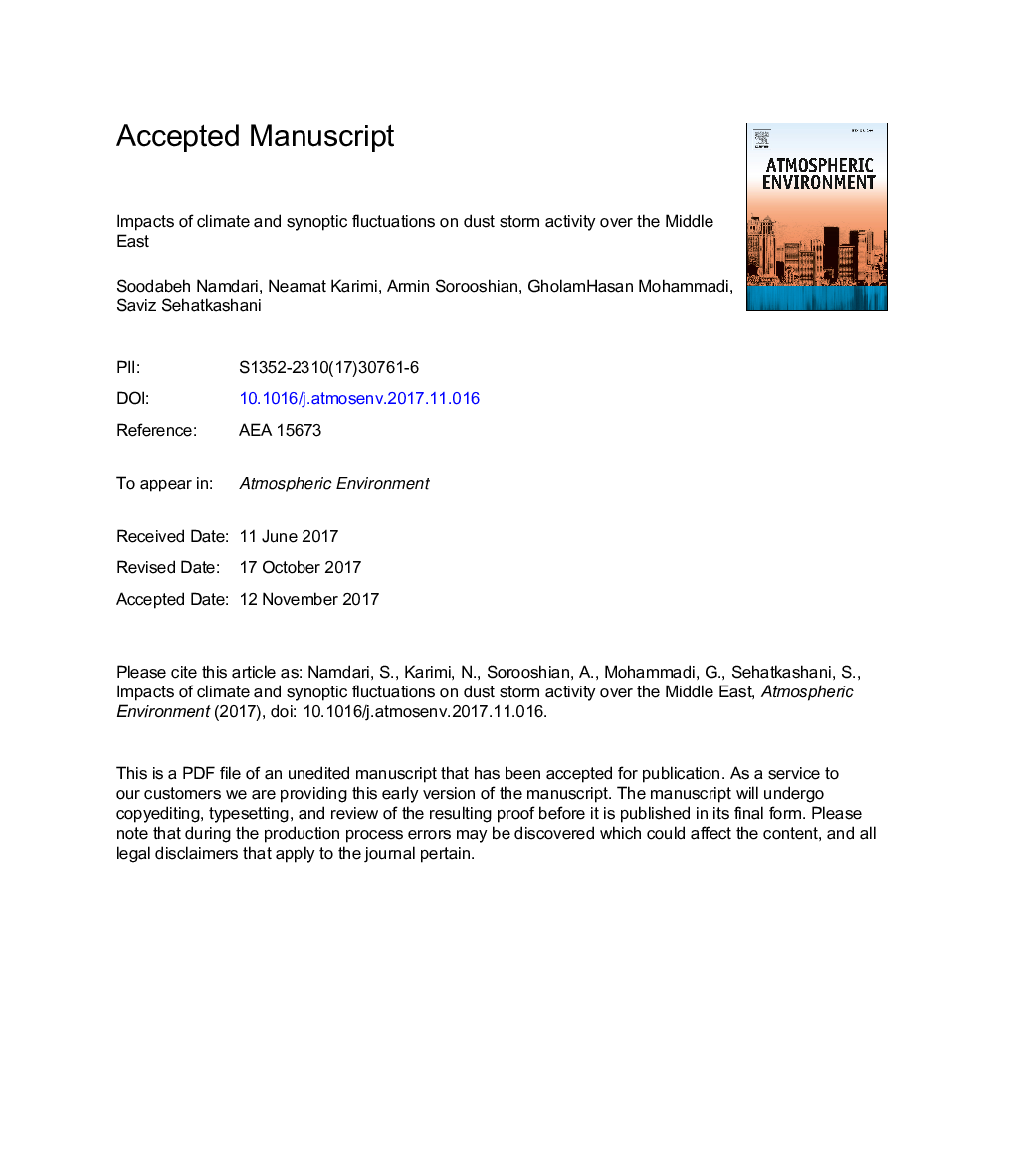| Article ID | Journal | Published Year | Pages | File Type |
|---|---|---|---|---|
| 8864294 | Atmospheric Environment | 2018 | 32 Pages |
Abstract
Dust events in the Middle East are becoming more frequent and intense in recent years with impacts on air quality, climate, and public health. In this study, the relationship between dust, as determined from Aerosol Optical Depth (AOD) and meteorological parameters (precipitation, temperature, pressure and wind field) are examined using monthly data from 2000 to 2015 for desert areas in two areas, Iraq-Syria and Saudi Arabia. Bivariate regression analysis between monthly temperature data and AOD reveals a high correlation for Saudi Arabia (RÂ =Â 0.72) and Iraq-Syria (RÂ =Â 0.64). Although AOD and precipitation are correlated in February, March and April, the relationship is more pronounced on annual timescales. The opposite is true for the relationship between temperature and AOD, which is evident more clearly on monthly time scales, with the highest temperatures and AOD typically between August and September. Precipitation data suggest that long-term reductions in rainfall promoted lower soil moisture and vegetative cover, leading to more intense dust emissions. Superimposed on the latter effect are more short term variations in temperature exacerbating the influence on the dust storm genesis in hot periods such as the late warm season of the year. Case study analysis of March 2012 and March 2014 shows the impact of synoptic systems on dust emissions and transport in the study region. Dust storm activity was more intense in March 2012 as compared to March 2014 due to enhanced atmospheric turbulence intensifying surface winds.
Related Topics
Physical Sciences and Engineering
Earth and Planetary Sciences
Atmospheric Science
Authors
Soodabeh Namdari, Neamat Karimi, Armin Sorooshian, GholamHasan Mohammadi, Saviz Sehatkashani,
